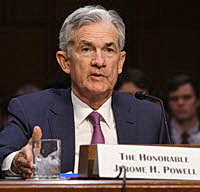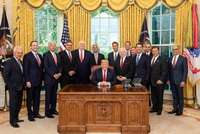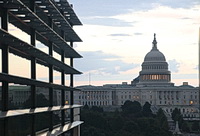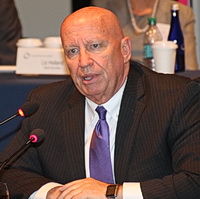Federal Reserve policymakers this week signaled they are likely to raise interest rates next month, after releasing minutes of their most recent Federal Open Market Committee (FOMC) meeting showing growing concerns over the economic repercussions from escalating trade disputes.
 |
|
Fed Chairman Jerome Powell today delivered remarks on “Monetary Policy in a Changing Economy” at the Federal Reserve Bank of Kansas City’s annual economic symposium . (reference: Powell’s speech, Aug. 24) |
- Fed Chairman Jerome Powell today delivered remarks on “Monetary Policy in a Changing Economy” at the Federal Reserve Bank of Kansas City’s annual economic symposium . Powell said the Fed faces two major risks of “moving too fast and needlessly shortening the expansion, versus moving too slowly and risking a destabilizing overheating. I see the current path of gradually raising interest rates as the FOMC approach to taking seriously both of these risks.” ( Powell’s speech , Aug. 24)
- As central bankers and economists gathered this week for the symposium, Kansas City Fed President Esther George yesterday told Bloomberg Television, “My own forecast is that it will be appropriate to raise rates a couple more times this year.” Dallas Fed President Robert Kaplan added in a CNBC interview that he sees three or four rate increases necessary over the next nine to 12 months.
- FOMC members are aiming to set interest rates to a “neutral” setting — one that neither spurs nor slows economic growth. Powell’s comments at today’s symposium come after his testimony before the Senate Banking Committee last month, when he stated, “With a strong job market, inflation close to our objective, and the risks to the outlook roughly balanced, the FOMC believes that – for now – the best way forward is to keep gradually raising the federal funds rate,” (Roundtable Weekly, July 20)
- Regarding commercial real estate, the FOMC’s meeting minutes released Wednesday show “CRE loans at banks maintained solid growth over the past several quarters, with growth shared across all three major CRE loan categories.”
- The minutes also show growing concern among monetary policymakers over how trade disputes could pose a threat to economic growth. “All participants pointed to ongoing trade disagreements and proposed trade measures as an important source of uncertainty and risks. Participants observed that if a large-scale and prolonged dispute over trade policies developed, there would likely be adverse effects on business sentiment, investment spending, and employment,” according to the Fed’s minutes.
- “Moreover, wide-ranging tariff increases would also reduce the purchasing power of U.S. households. Further negative effects in such a scenario could include reductions in productivity and disruptions of supply chains,” the minutes continue.
- Yesterday, the U.S. and China started implementation of 25 percent tariffs on $16 billion worth of each other’s goods, according to Reuters. The negative economic impact of tariffs on each state is the focus of a recent U.S. Chamber of Commerce analysis. (Politico’s Morning Money, Aug. 23)
- Commenting on last week’s Q3 Real Estate Roundtable Economic Sentiment Index, Roundtable President and CEO Jeffrey DeBoer noted, “Looking to future market conditions, industry executives are noting uncertainties regarding the November midterm elections and growing interest rate and international trade concerns. Policymakers must stay focused on developing pro-growth policies that continue to benefit the overall economy and spur job growth.”
 |
|
FOMC minutes show growing concern among monetary policymakers over how trade disputes could pose a threat to economic growth. |
The FOMC’s next meeting is scheduled for Sept. 25-26. Former Fed Governor Kevin Warsh (2006 to 2011) will address Roundtable members on Sept. 26 during The Roundtable’s Fall Meeting in Washington, DC.










